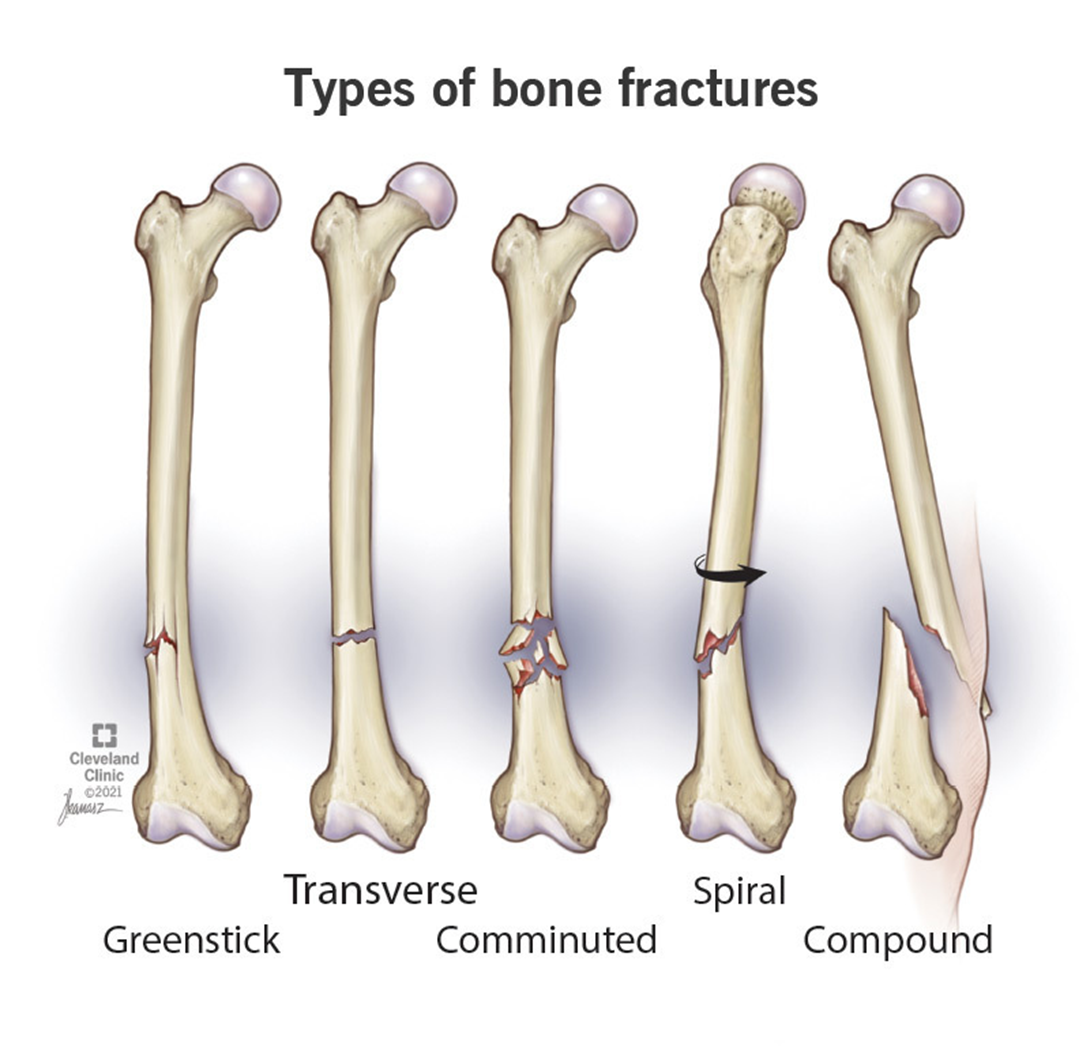A nurse in the emergency department is assessing a preschool-age child who has bruises on both arms and a spiral fracture of the left ulna. The child's parent tells the nurse that the child tripped over some toys and fell down. Which of the following actions should the nurse take?
Take pictures of the child's injuries once the parent leaves the room.
Have a facility security officer interview the parent.
Complete an incident report concerning the child's injuries.
Report the child's injuries to Child Protective Services.
The Correct Answer is D
Choice A reason: Taking pictures of the child's injuries once the parent leaves the room is not a correct action, as it violates the child's privacy and dignity. The nurse should not take pictures of the child without the parent's consent and only if it is required by the facility's policy or the law.
Choice B reason: Having a facility security officer interview the parent is not a correct action, as it is not within the scope of the security officer's role and may escalate the situation. The nurse should not involve the security officer unless there is a threat of violence or harm to the child, the parent, or the staff.
Choice C reason: Completing an incident report concerning the child's injuries is not a correct action, as it is not relevant to the child's situation. The nurse should complete an incident report only if there is an adverse event or error that occurred within the facility that affected the child's care or safety.
Choice D reason: Reporting the child's injuries to Child Protective Services is the correct action, as it is the nurse's legal and ethical duty to protect the child from potential abuse or neglect. The nurse should suspect child abuse based on the child's injuries, which are inconsistent with the parent's explanation and indicative of non-accidental trauma. The nurse should follow the facility's protocol and the state's law for reporting suspected child abuse.

Nursing Test Bank
Naxlex Comprehensive Predictor Exams
Related Questions
Correct Answer is D
Explanation
Choice A reason: I should discard personal health information documents in the trash before leaving the unit is not a correct statement, as it violates the client's privacy and the Health Insurance Portability and Accountability Act (HIPAA). I should shred or dispose of personal health information documents in a secure container or according to the facility's policy.
Choice B reason: I can post the client's vital signs in the client's room is not a correct statement, as it exposes the client's health information to unauthorized persons. I should keep the client's vital signs confidential and only share them with the client and the health care team.
Choice C reason: I can use another nurse's password as long as I log off after using the computer is not a correct statement, as it compromises the security and integrity of the electronic health record. I should use my own password and never share it with anyone else.
Choice D reason: I should encrypt personal health information when sending emails is a correct statement, as it protects the client's privacy and the HIPAA. I should use encryption or other secure methods when transmitting personal health information electronically.
Correct Answer is C
Explanation
Choice A reason: A provider's prescription is not a resource for developing a standard for removal of indwelling urinary catheters. A prescription is a specific order for a particular client, not a general guideline for a group of clients.
Choice B reason: Maslow's hierarchy of needs is not a resource for developing a standard for removal of indwelling urinary catheters. Maslow's hierarchy of needs is a theory of human motivation that ranks the basic needs of individuals from physiological to self-actualization. It does not provide specific information on how to perform nursing interventions.
Choice C reason: Evidence-based practice is a resource for developing a standard for removal of indwelling urinary catheters. Evidence-based practice is the integration of the best available research evidence, clinical expertise, and client preferences and values into clinical decision making. It helps to ensure that the nursing care is effective, safe, and consistent.
Choice D reason: A critical pathway is not a resource for developing a standard for removal of indwelling urinary catheters. A critical pathway is a tool that outlines the expected course of treatment and outcomes for a specific diagnosis or procedure. It does not provide detailed instructions on how to perform nursing interventions.
Choice E reason: A surgical record is not a resource for developing a standard for removal of indwelling urinary catheters. A surgical record is a document that records the details of a surgical procedure, such as the type of surgery, the anesthesia used, the operative findings, and the complications. It does not provide information on the postoperative care of the client.
Whether you are a student looking to ace your exams or a practicing nurse seeking to enhance your expertise , our nursing education contents will empower you with the confidence and competence to make a difference in the lives of patients and become a respected leader in the healthcare field.
Visit Naxlex, invest in your future and unlock endless possibilities with our unparalleled nursing education contents today
Report Wrong Answer on the Current Question
Do you disagree with the answer? If yes, what is your expected answer? Explain.
Kindly be descriptive with the issue you are facing.
